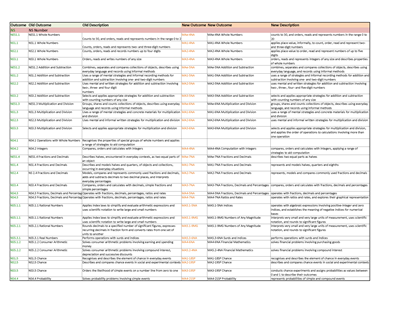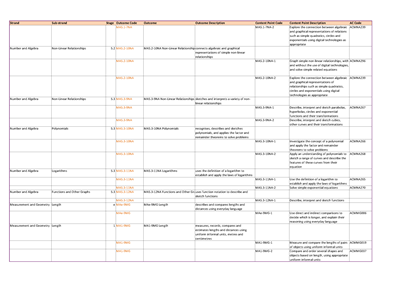NSW Syllabus for the Australian Curriculum - Content Breakdown
Sunday, 09 June 2013 | 8 Comments
Teachers in NSW, are currently programming for the New NSW K–10 syllabuses for the Australian curriculum which will be implemented from 2014.
Here are a couple of documents/spreadsheets I put together.
NSW Syllabus for AC mapping old outcomes to new
A mapping of the old syllabus outcomes to the new syllabus outcomes. Preview:

New NSW Syllabus for AC with content points
Takes the new outcomes and breaks them down into “content points” (my term). Preview:

Post a comment
New Subscribe to the …
MathsLinksemail newsletter
Get updates…
About
Simon Job — eleventh year of teaching maths in a public high school in Western Sydney, Australia.
MathsClass is about teaching and learning in a maths classroom. more→
Archive
Elsewhere
 @simonjob
@simonjob
updates via  @mathslinks
@mathslinks
Recently read/found.
Sydney University abandons HSC prerequisites in diversity push
mathsSeven ways to use diagnostic questions to check for understanding
maths bartonDeveloping a departmental approach to problem-solving
maths bartonDeveloping a departmental approach to reviewing answers
maths bartonDeveloping a departmental approach to worked examples
maths barton workedexamples examples
Comments
author
author
author